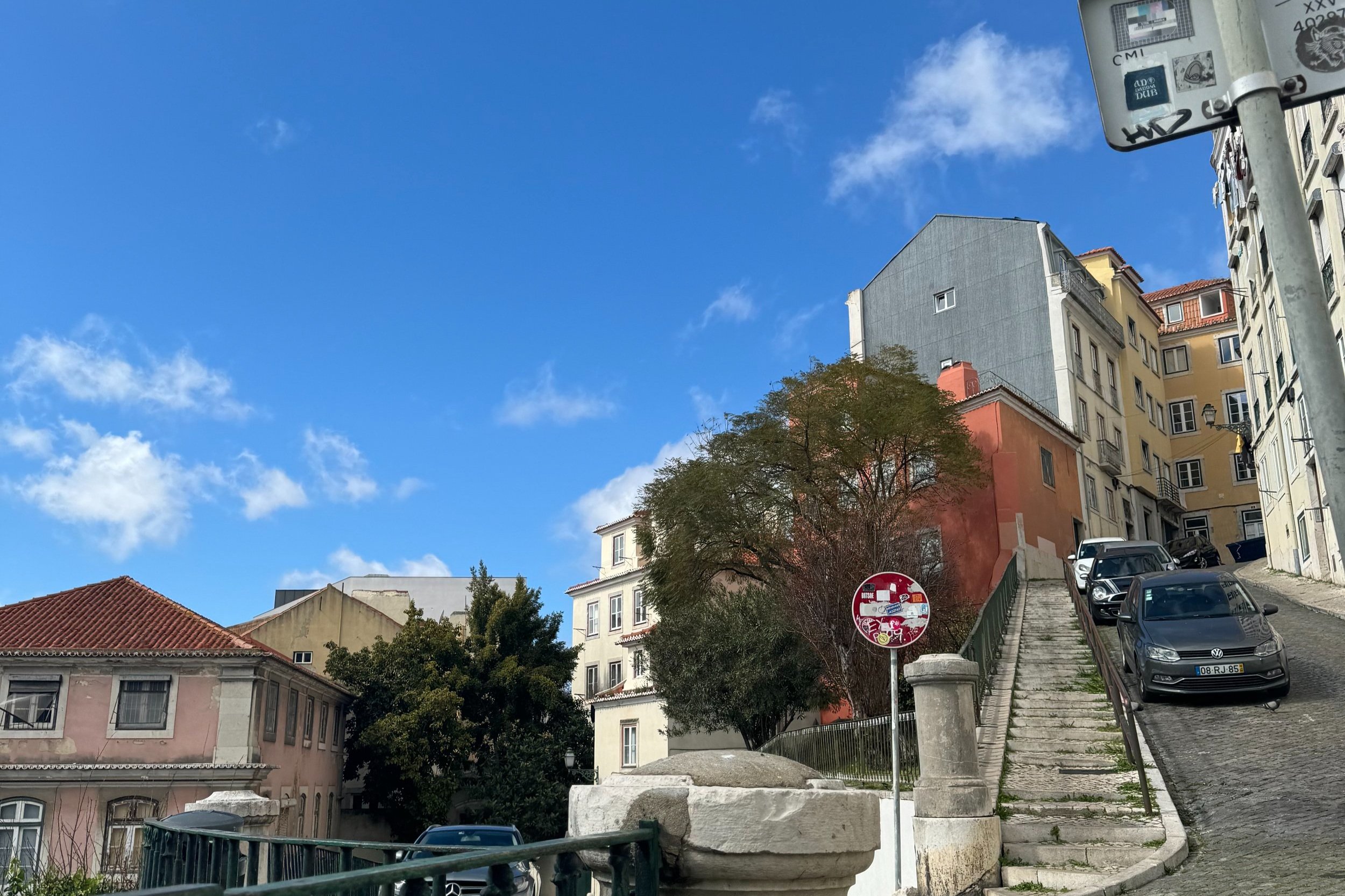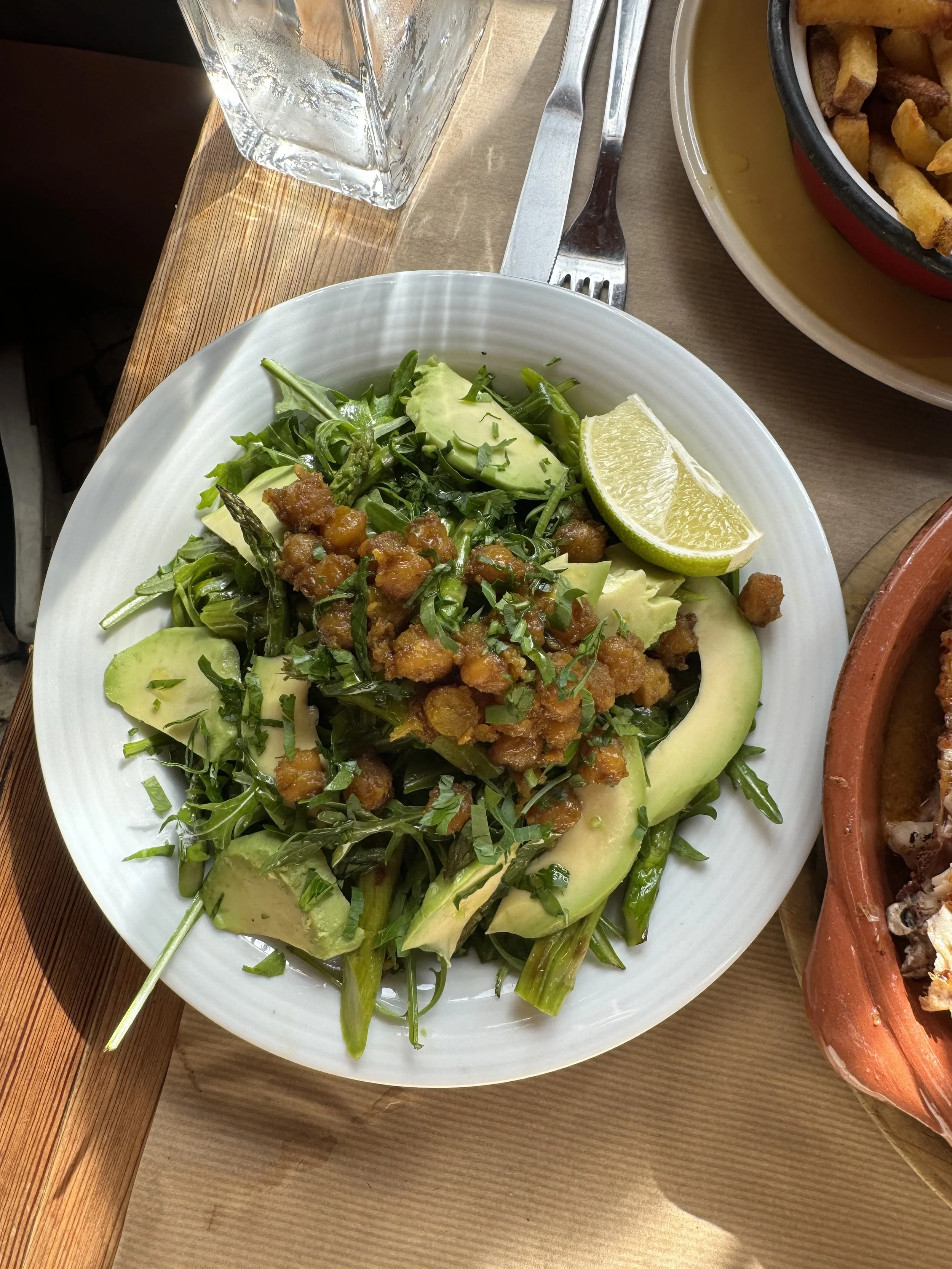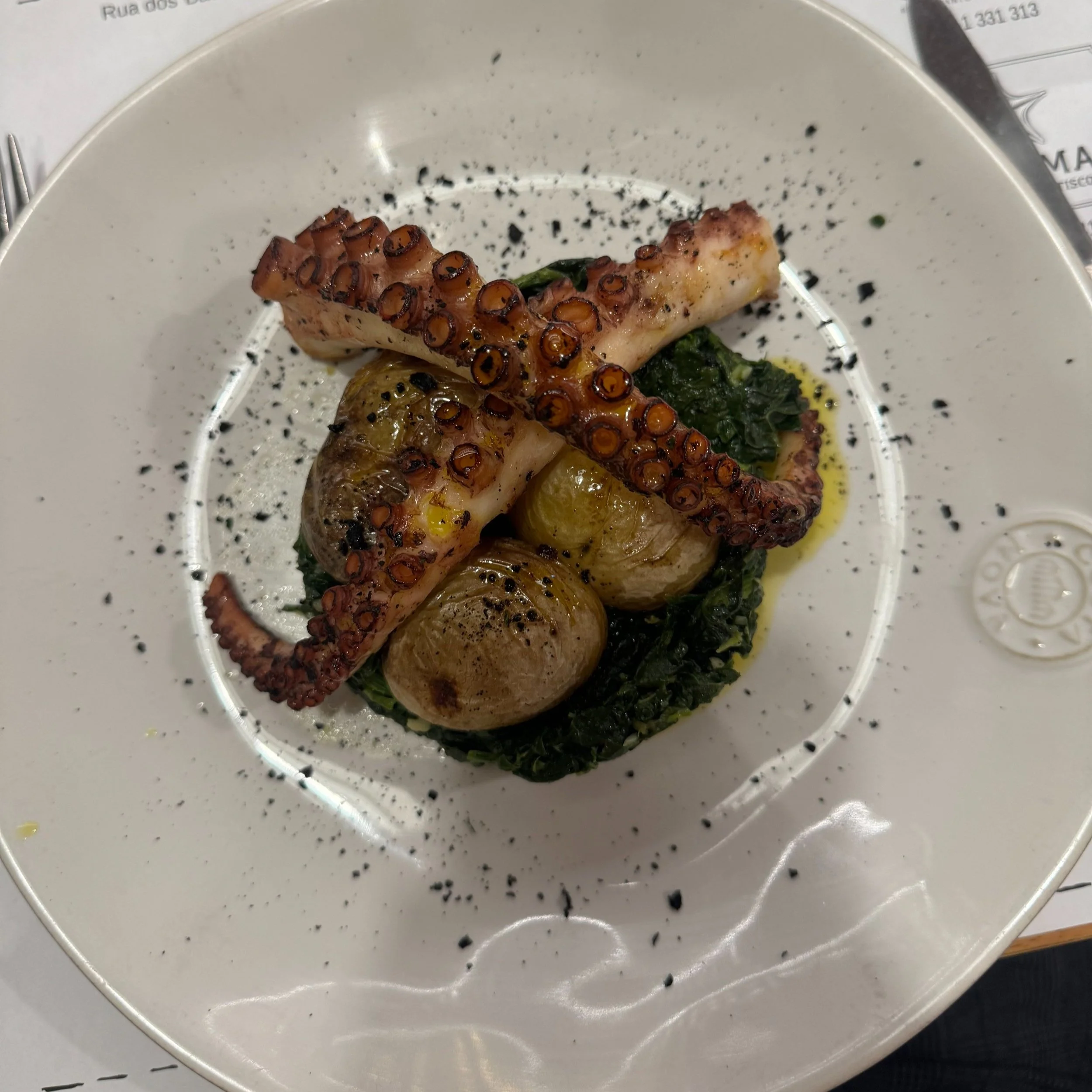lisbon i. old city
I love Washington D.C, and I am a walking personification of every stereotype I could ascribe to it. That being said, I think that, if I had to describe Washington D.C. to you in terms of the culture in one sentence, I would say this: it feels like a city with a lot of people who are desperately afraid to die. The city has a professional environment dedicated to cheating oblivion through hyper competency, power, and political achievement. It’s a city that holds the heartbeat of a young, often arrogant empire, and it is therefore the home of an ambitious population, many of whom are operating under the assumption that they can fight back entropic decay if they maximize their time and optimize every interaction. Once again, I’m exaggerating and generalizing, and I’m also guilty of that attitude. But I think the observation stands. In fact, I think every young city in America somewhat displays the same tendency toward hubris and self-immortalization. I think it’s something that only young cities can really do. I think that, as an American who is bound to inhabit young cities for the rest of my life, I will always adopt that same naïveté.
With this in mind, then, I’m beginning to understand why the culture of an older city like Lisbon, Portugal feels so, well, wise. When a population flows every day through a city with old, painted clay buildings, thousand-year-old churches, and picturesque cobblestone streets, it makes sense that the population would be situated within a cultural context that feels more comfortable with sitting, enjoying life, reading, and spending the days with more of an emphasis on breathing it all in rather than owning it all. It makes sense because the population is made more acutely aware of historical context: it is the latest generation in an extremely long continuity of writers, thinkers, and empires, and it will not be the last. The area of Lisbon was settled over a thousand years B.C.E, endured Roman and Moorish rule, sieges, and wars for thousands of years, and became Portugal’s capital city in 1256 C.E. In my eyes, when you’re residing within a physical reminder of the massive continuity of the human race, it’s a lot more difficult to stroll around with a close-minded historical perspective and a ego-centric view of oneself as cheating death via fame and honor.
Enough philosophical B.S. Lisbon is beautiful. The streets are, like I said, cobbled, and the buildings and alleyways wind geometrically up hills and around baffling corners in a manner that always seems to speak to the sunlight. As you stroll around, you’re greeted by rickshaw-like buggies and cute trolley cars. The city feels comforting, however, precisely because it seems to seamlessly incorporate so many design elements that you’d be used to elsewhere. The murals both reminded me of murals I’d seen in Medellin and D.C., and were quintessentially reflective of Lisbon’s artistic culture. The street musicians played tunes from all over the world— I admittedly got pretty emotional at one violinist’s rendition of Experience by Ludovico Einaudi— but the way the pedestrians greeted and smiled at those musicians, again, seemed to emanate from a distinctly Portuguese brand of genuine interpersonal appreciation.
Egg Tart
Our first bites in Lisbon were egg tarts from a local bakery next to our Airbnb. The egg tart is a Portuguese specialty, and it’s clear why. The texture is creamy— almost yogurt-like. It is both surprisingly sweet and savory, owing both to the egg base of the custard and the pastry shell. The brullee top is fantastic when slightly burnt- the crunchy, somewhat bitter top layer melts on your tongue. I haven’t had any other egg tarts in my life, so I’m not going to give a specific rating on this one. It was good, and I’m looking forward to trying one from a more locally famous bakery.
Chapito e Mesa
The next meal was lunch. We chose to go to Chapito e Mesa, a small spot next to Castillo de Sao George which offers some genuinely fantastic views of the city. The ambiance of this restaurant was incredible— it was situated on a hillside among a the bustling tourism center which surrounds the Castillo. The food was very enjoyable. The bread was great; it was one of those breads which is dense in your hand, but then magically becomes fluffy and light when you take a bite. The salad we ordered was pretty good. It was just an asparagus salad, so nothing super special; yet, still, I appreciated the dressing integration. Finally, we split a pan grilled chicken dish. The buttery sauce and turmeric/garlic seasoning on the chicken were solid, while the texture of both the inside of the chicken and the skin were very good. This was a solid, solid lunch.
Salad: 7.5/10
Bread: 9/10
Chicken: 8/10
Overall: 7.9/10
Maria Catita
For dinner, we opted for Maria Catita, a classic seafood/Portoguese cuisine restaurant near our stay. This was the moment of truth— my first time tasting Iberico pork. It did not disapoint. The meat was buttery, melting on my tounge as soon as I took a bite. The pork tasted both nutty and somewhat sweet, which was a pleasant surprise. My main meal, a grilled octopus and spinach dish, was very good. They didn’t skip with the oil and seasonings on the spinach, which I appreciated. The char on the octopus was excellent, and the flavors were great. However, the octopus was slightly over-cooked; it’s hard to nail an octopus, anyway.
Iberico pork: 9/10
Grilled octopus: 8.5/10
Overall: 8.5/10
For dessert, we got gelato from a tiny little spot with a name I can’t remember. It was solid. Gelato is yummy. Don’t order a baby sized gelato in Lisbon, or you’ll get laughed at.
I am going to bed full of food and slightly more aware of the vastness of human culture.







